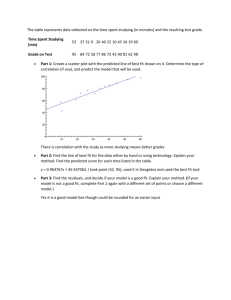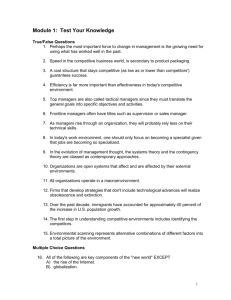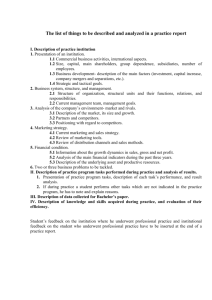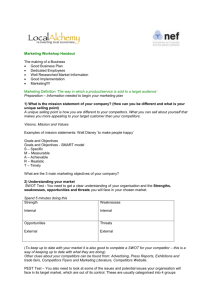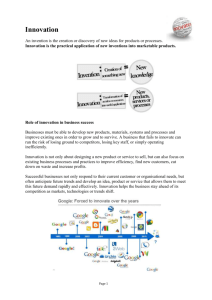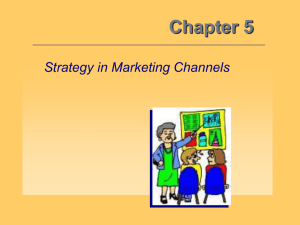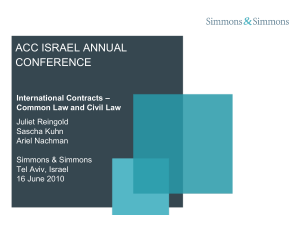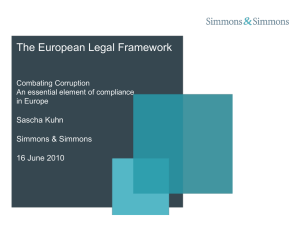1 - Faculty & Staff Web Pages
advertisement
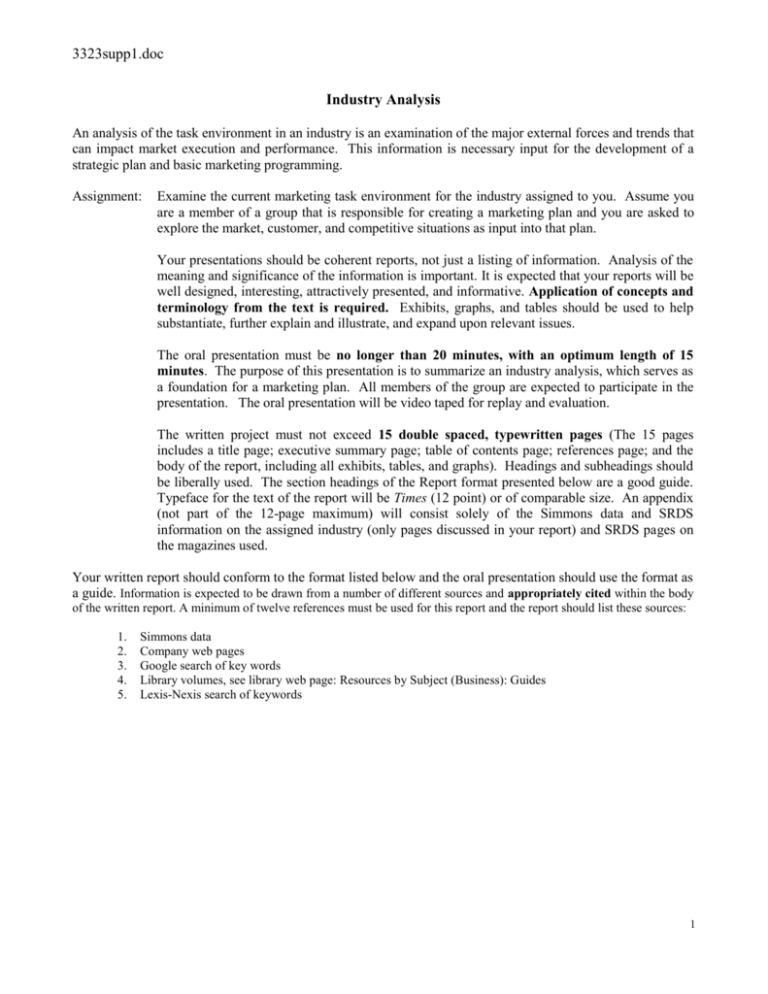
3323supp1.doc Industry Analysis An analysis of the task environment in an industry is an examination of the major external forces and trends that can impact market execution and performance. This information is necessary input for the development of a strategic plan and basic marketing programming. Assignment: Examine the current marketing task environment for the industry assigned to you. Assume you are a member of a group that is responsible for creating a marketing plan and you are asked to explore the market, customer, and competitive situations as input into that plan. Your presentations should be coherent reports, not just a listing of information. Analysis of the meaning and significance of the information is important. It is expected that your reports will be well designed, interesting, attractively presented, and informative. Application of concepts and terminology from the text is required. Exhibits, graphs, and tables should be used to help substantiate, further explain and illustrate, and expand upon relevant issues. The oral presentation must be no longer than 20 minutes, with an optimum length of 15 minutes. The purpose of this presentation is to summarize an industry analysis, which serves as a foundation for a marketing plan. All members of the group are expected to participate in the presentation. The oral presentation will be video taped for replay and evaluation. The written project must not exceed 15 double spaced, typewritten pages (The 15 pages includes a title page; executive summary page; table of contents page; references page; and the body of the report, including all exhibits, tables, and graphs). Headings and subheadings should be liberally used. The section headings of the Report format presented below are a good guide. Typeface for the text of the report will be Times (12 point) or of comparable size. An appendix (not part of the 12-page maximum) will consist solely of the Simmons data and SRDS information on the assigned industry (only pages discussed in your report) and SRDS pages on the magazines used. Your written report should conform to the format listed below and the oral presentation should use the format as a guide. Information is expected to be drawn from a number of different sources and appropriately cited within the body of the written report. A minimum of twelve references must be used for this report and the report should list these sources: 1. 2. 3. 4. 5. Simmons data Company web pages Google search of key words Library volumes, see library web page: Resources by Subject (Business): Guides Lexis-Nexis search of keywords 1 3323supp1.doc Report Format: I. II. Table of Contents Executive Summary This is a summary of the key points found in the marketing task environment analysis. The Executive Summary is not an introduction. The executive summary should also provide an overall assessment of the environmental conditions from the perspective of a firm being successful in the industry for each of the four areas of the report. For example, strong competitors make it more difficult to be successful. Task Environments Environmental Summary Very Moderately Moderately Very Negative Negative Neutral Positive Positive Market Environment Customer Environment Competitor Environment III. Task Environment Description This section addresses the competitive conditions of firms doing business within the product category. A. Markets 1. Describe the market environment for the product, including any direct or indirect product competition, alternative competitive product forms, and any significant historical events. 2. What is the current market size and the growth potential for the next 3 to 5 years? 3. Is there a difference in the geographic sales distribution for this product/service? If so, what? 4. How mature is this industry as a whole? 5. In what stages of the product life cycle are the different product forms in this category? B. Customers 1. What demographic patterns found in the Simmons data impact consumer behavior in this product category? 2. What major demographic developments and trends pose future opportunities or threats to firms doing business in this product category? 3. What market segments are not currently being served well that offer market opportunities? 4. Is this product/service generally considered to be a high or low involvement purchase? Justify your assessment. What are the marketing implications of the level of involvement? 5. Do opinion leaders and/or reference groups heavily influence the selection of this product/service? If so, what are the marketing implications? 7. Are most consumers in the extensive, limited, or routine decision stage for your product/service? What are the marketing implications? 8. What level of brand loyalty exists for the brands in the product category? Justify your assessment. 2 3323supp1.doc 9. What broad cultural or subcultural patterns could affect the public’s attitude towards the industry, future competition, and/or substitutes for this product? 10. Are there anticipated changes in consumer values or lifestyles that would affect the performance of your product/service? C. Competitors 1. Who are the major competitors in the industry? 2. Describe the major competitors in terms of their size, market share, marketing strategies, and any other characteristics that are appropriate to understand competitive intentions and behavior. 3. What are the key product/service attributes promoted most heavily in this industry? 4. What are the positioning strategies of the competing brands? 5. What are the key marketing mix issues? a. Product 1. How prominent are brand extensions and family branding in this product category? 2. How prominent are store-branded and generic products in this product category? 3. How do competitors augment their product or service? b. Price 1. Describe the pricing strategies of competitors 2. Provide a price comparison table of the competitors, including store and generic brands c. Promotion 1. Describe the promotional environment (advertising, sales promotions, personal selling, and public relations). How do promotion strategies differ among competitors? 2. What specific media vehicles are most productive for this product? What are the reach and efficiency numbers from Simmons? What are SRDS costs/1000? 3. What are the most effective vehicles to efficiently reach key market segments? d. Place 1. What are the different ways that products in this category are distributed (e.g., catalogs, discount stores, warehouse clubs)? 2. What are the market shares for these distribution systems? 3. What is the future role of the Internet in the distribution of this product? 4. Are there any potential changes in the relative importance of the distribution systems? IV. Simmons Data Copy of Simmons data pages used in preparing the report. 3 3323supp1.doc V. References BE SURE ALL SOURCES OF INFORMATION ARE APPROPRIATELY REFERENCED IN THE BODY OF YOUR REPORT AND LISTED IN THE REFERENCE SECTION. Format for citations in the text: Sentence (author, date). Format for Reference Section: Journal Article: Author’s last name, first name (date), “Article Title”, Publication, volume # (month), pages. Book: Author’s last name, first name (date), Book Title, Location: Publisher. Internet: Title, complete internet address 4

